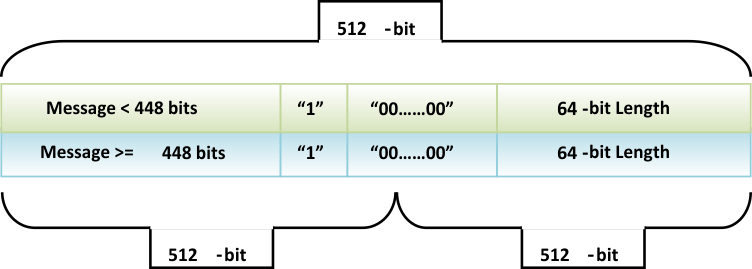SLAA547C July 2013 – July 2021 MSP430FR5739
4.3.1 Message Padding and Parsing
In order for a hash to be computed, the message must be padded to a multiple of a 512-bit hashing block. The last 64-bits of the last block is reserved for the bit count of the message. Figure 4-14 shows how padding is implemented. At the end of the message to be hashed a single "1" bit is appended followed by zeros. The zeroes continue until Message + Message Length + "1" + "00…00" = 512 bits.
 Figure 4-14 Example of Message Padding
Figure 4-14 Example of Message Padding